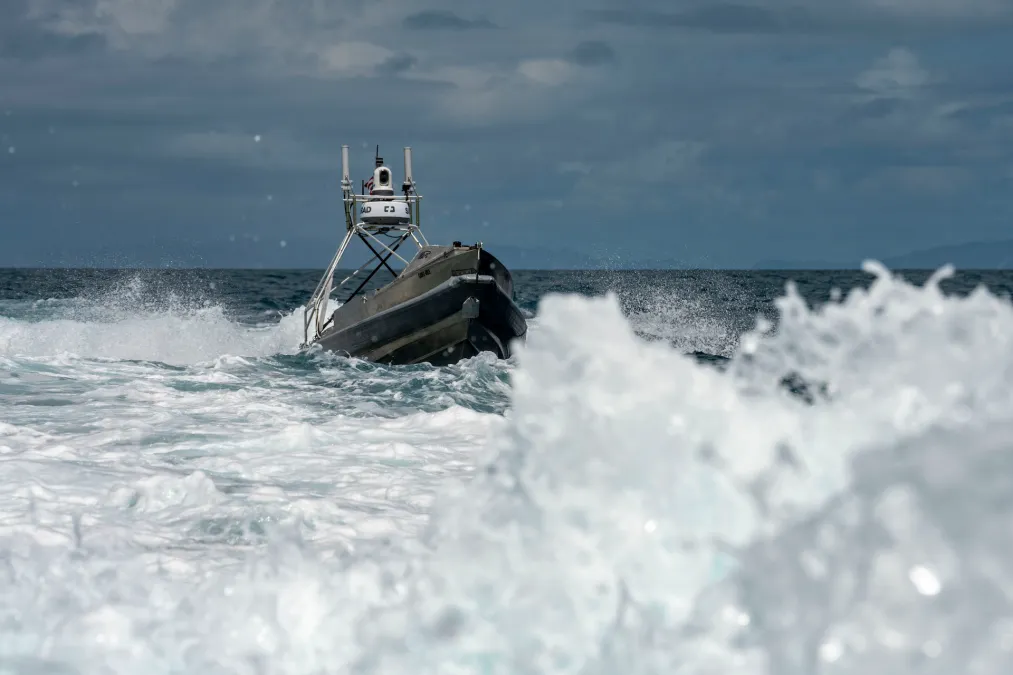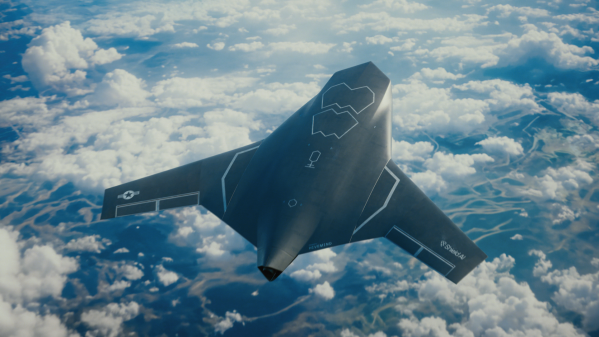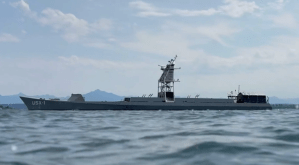Navy CNO unveils ‘Project 33’ with a heavy emphasis on robotic systems, information dominance

Chief of Naval Operations Adm. Lisa Franchetti on Wednesday laid out a new initiative called Project 33 that includes a goal of scaling robotic and autonomous systems across the fleet by 2027 so that the sea service will be ready for a potential war against China.
The forthcoming push is part of her “CNO Navigation Plan,” which acknowledges that officials “cannot manifest a bigger traditional Navy in a few short years.”
“The Chairman of the People’s Republic of China (PRC) has told his forces to be ready for war by 2027 — we will be more ready,” Franchetti wrote. “Project 33 is how we will get more ready players on the field by 2027. Project 33 sets my targets for pushing hard to make strategically meaningful gains in the fastest possible time with the resources we influence.”
Accelerating the integration of robotic platforms and autonomous systems is one of the seven “targets” for that initiative.
Unmanned capabilities not only keep sailors out of harm’s way, but they provide opportunities to greatly expand the sea service’s warfighting capacity at less cost than traditional Navy vessels.
Officials have been laying the keel for a future hybrid fleet via experimentation and other efforts, such as standing up Task Force 59, establishing the Disruptive Capabilities Office, and regularizing the integration of unmanned platforms into numbered fleets via 4th Fleet. Earlier this year, Franchetti announced the creation of a new rating for robotics warfare specialists among enlisted personnel, and the service also stood up a new robo-ship squadron aimed at helping the service integrate small maritime drones into its forces.
Additionally, the Pentagon’s Replicator effort is aiming to accelerate the fielding of uncrewed surface vessels and unmanned underwater vehicles for the Navy.
Franchetti is looking to get many more robotic systems into the water in the next three years in operational settings, noting in her navigation plan that officials also recognize the value that can be derived from employing commercial robotic and autonomous systems in sea-denial missions.
“Based on extensive learning from fleet experimentation and real-world developments in the Black and Red Seas, we have an opportunity to expand, extend, and bolster the reach, resilience, and lethality of our conventionally manned fleet through new disruptive and emerging technologies. As the Navy works on delivering a truly hybrid fleet to capitalize on that opportunity, nearer term operational challenges demand that we integrate proven robotic and autonomous capabilities as soon as possible. We must do so with a focus on how we will use these systems in war,” she wrote.
“By 2027, we will integrate proven robotic and autonomous systems for routine use by the commanders who will employ them. We will integrate mature capabilities into all deploying Carrier and Expeditionary Strike Group certifications to refine our approach to command and control of manned-unmanned teams at sea. Our next phase in this innovation cycle will prioritize key operational problems across critical mission areas such as surveillance, fires, networking, logistics, and deception,” she added.
The CNO noted that officials are also working now on concept and requirements analysis for larger robotic systems, as well as AI applications and other software that help commanders better understand complex, “information-centric” battlespaces.
The quest for “information dominance,” including through the creation of new command centers, is another key element of Project 33 as Franchetti looks to boost the service’s capabilities to collect, analyze and distribute important data and information across the fleet.
That will be especially critical as the Navy refines its tactics for distributed maritime operations and creates a new Navy Warfighting Concept that’s in line with the U.S. military’s Joint Warfighting Concept and Combined Joint All-Domain Command and Control (CJADC2), which aims to better link systems and data streams across the services and key allies and partners for more effective and efficient ops.
“We will expand the Navy’s contribution to the Joint warfighting ecosystem. Because of this ecosystem, our carrier air wings can strike targets thanks to cyber and space effects delivered by Air Force and Space Force capabilities. Our destroyers can shoot missiles against ships detected and tracked by Marine Corps, Army, Special Operations Forces, or Allied sensors. In this ecosystem, Information Warfare delivers effects on par with those of aircraft, ships, and submarines,” Franchetti wrote.
Information dominance is seen as a key enabler of the next generation of maneuver warfare. Officials involved in the secretive effort known as Project Overmatch, which is part of the sea service’s contribution to CJADC2, have been pushing to enhance these types of capabilities.
Franchetti’s navigation plan highlighted the importance of a maritime operations center for fleet-level C2 and distributed maritime operations.
“MOCs and the processes they execute, whether in one location or disaggregated, are how fleets convert data into information to deliver decision advantage for the commander. MOCs must be capable of integrating with the Joint Force, Allies, and partners to link our fleet commanders to the range of sensors, shooters, and effectors distributed across the battlespace. To integrate a maneuvering, distributed, information-centric fight requires that we treat MOCs as the weapons systems they are,” she wrote.
“By 2027, all fleet headquarters, starting in the Pacific Fleet, will have ready MOCs certified and proficient in command and control, information, intelligence, fires, movement and maneuver, protection, and sustainment functions as assessed by our MOC Training Teams,” she added.
Franchetti has tapped the deputy chief of naval operations for warfighting requirements and capabilities (OPNAV N9) to be the “single accountable official” for accelerating the push to operationally integrate robotic and autonomous systems into the fleet.
The deputy chief of naval operations for information warfare (OPNAV N2N6) has been selected as the official accountable for enhancing the service’s ability to fight via maritime operations centers.
Meanwhile, the other “targets” for Project 33 include eliminating ship, submarine and aircraft maintenance delays; recruiting and retaining the force the Navy needs; delivering a high “quality of service” for sailors; training for combat including through high-tech live, virtual and constructive (LVC) training; and restoring critical infrastructure.






